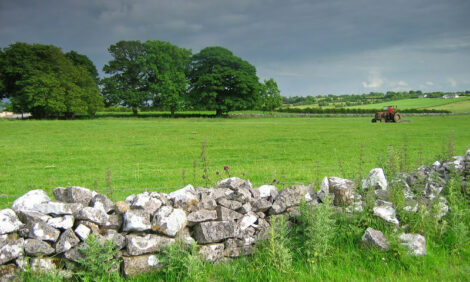



Farmers See Profits Drying Up
US - At a time when farmers typically are busy planting corn, some areas of the state show planted acres well below normal.As the calendar moves toward June, those late planting dates will have an increasing impact on yields. Producers face the dilemma of balancing ideal planting date with field conditions. Planting when soil is too wet might hurt yields, but so will waiting too long.
“It’s difficult to tell people to have patience because the calendar keeps slipping away, but we really have to be careful that we don’t do something to save a couple days and actually cost us yield if weather turns hot and dry in the summer,” said Bill Wiebold, a University of Missouri Extension agronomist.
“If soils are wet they are easily compacted, so when they till or plant, the root systems get damaged. That damaged root system is a problem in the drier and warmer part of the season.”
The USDA estimates planting in east-central Missouri to be at 10 percent, compared to 80 percent planted at this time last year. A similar lag in central and northeast Missouri shows farmers planted only 24 and 19 percent, respectively, which is about 50 percentage points behind last year. Still, that pales to southern Missouri, where as of May 1 corn planting in some areas lags nearly 60 percentage points behind.
The delay shaves precious profits from crops. The later that planting occurs, the less corn you can expect at harvest time.
Expected yields drop to 86 per cent by 15 May and to 77 per cent by 31 May, according to data collected over a five-year period at MU’s Bradford Research and Extension Center in Columbia.
Yields take a hit from later planting for a few reasons.
Late planting causes smaller plants due to less leaf growth in June, adds more stress during silking in July and limits absorption of sunlight as kernels fill out in August.
Late planting pushes the sensitive silking stage to later in the summer, when it’s usually hotter and often drier, Wiebold said.
“Instead of tasseling around the Fourth of July it tassels the third week of July, and that puts the plant into a potentially stressful time.”
With any luck these spring rains will decrease. Then farmers will start seeing how differences in soil type and quality affect how soon they will be able to get back to work, Wiebold said.
“You’ll really see a difference between poorly and well-drained soils by how fast people can get in the fields,” he said.
“The areas that are well-drained will get planted first, but if you take Columbia and into the northeastern part of the state where we have claypan soils, those will be some of the last soils that will dry enough to get planted.”



